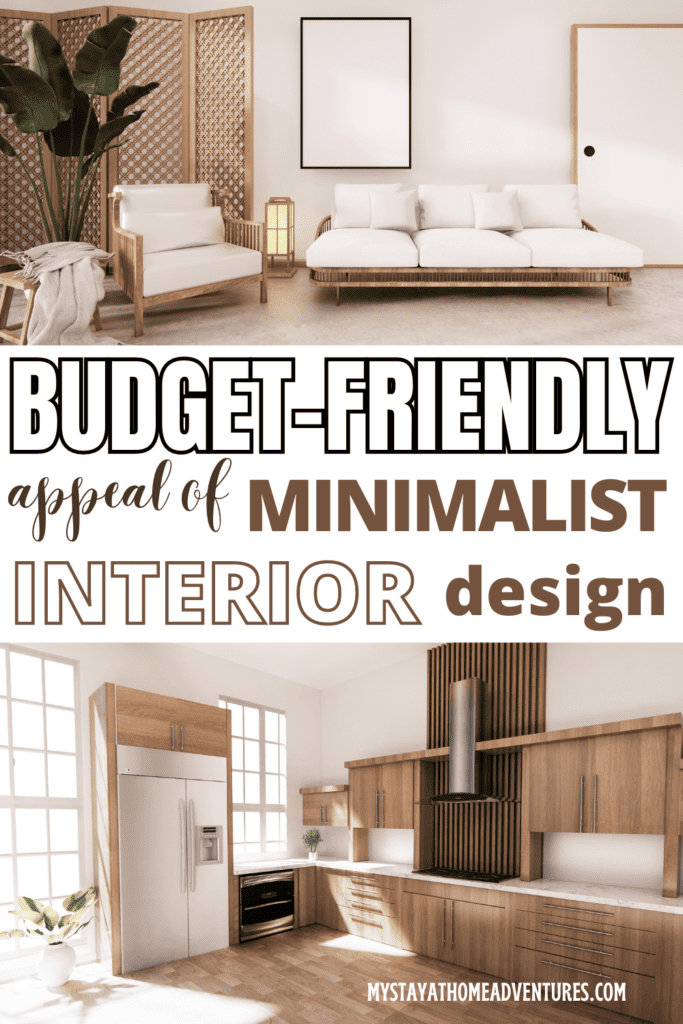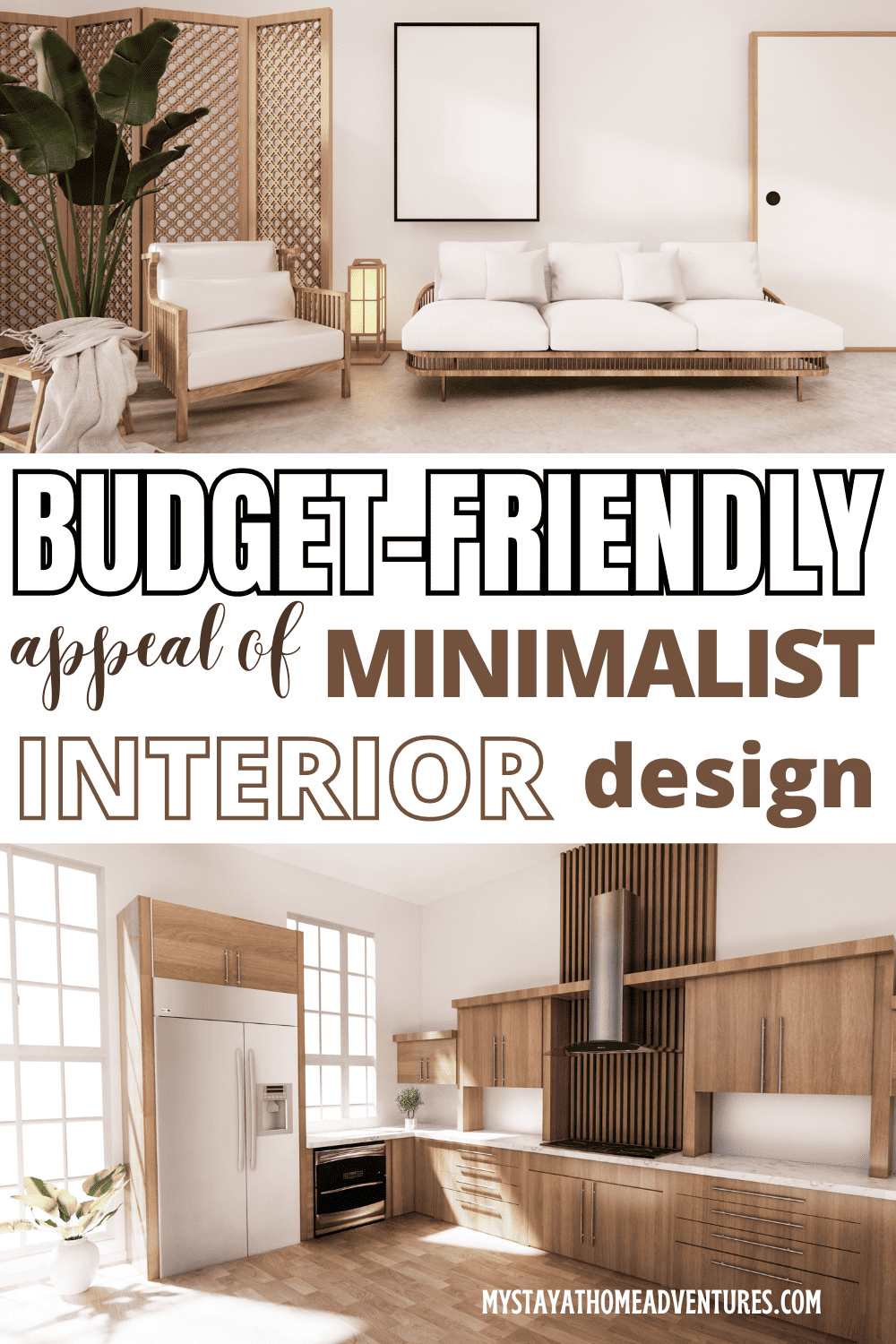The Budget-Friendly Appeal of Minimalist Interior Design
This post may contain affiliate links which might earn us money. Please read my Disclosure and Privacy policies hereMinimalist interior design is a popular trend that emphasizes simplicity, functionality, and a clutter-free environment. It embraces a less-is-more philosophy by stripping away unnecessary elements and focusing on clean lines, uncluttered spaces, and a sense of calmness. The deliberate use of minimal furnishings and a restrained color palette creates a tranquil and harmonious environment.
Contrary to popular belief, achieving a minimalist aesthetic doesn't have to come with a hefty price tag. With the right approach and budget-friendly tips, anyone can create a serene and stylish minimalist interior without breaking the bank.
So let's dive into the world of minimalist interior design and discover how to create a budget-friendly minimalist space that reflects your personal style.
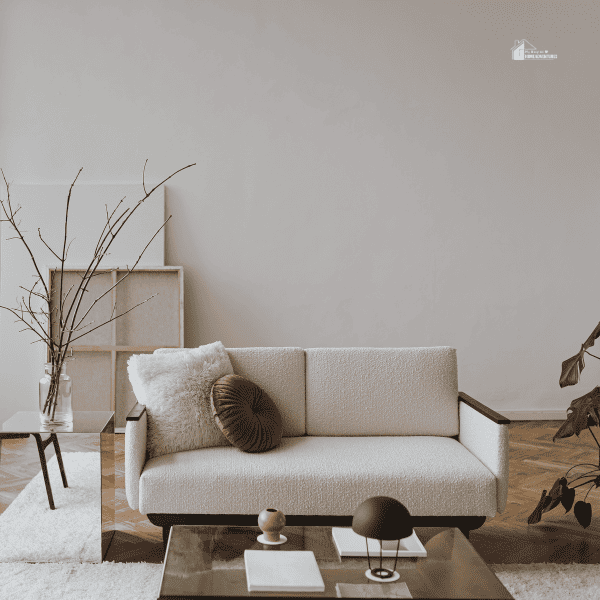
Understanding Minimalist Interior Design Principles
Understanding the principles of minimalist interior design is essential to create an authentic and budget-friendly minimalist space. One of the key principles is the concept of “less is more.” By removing unnecessary clutter and focusing on essential elements, minimalist homes promote a sense of freedom and simplicity.
This approach not only creates a visually appealing space but also has significant environmental benefits. Minimalist design also emphasizes functionality, with furniture and decor serving a practical purpose. The use of clean lines and a restrained color palette contributes to the overall aesthetic, creating a sense of calmness and harmony in the space.
Benefits of Minimalist Interior Design
Minimalist interior design offers numerous benefits that can greatly improve your living space. Firstly, it promotes a sense of calmness and tranquility by eliminating clutter and unnecessary distractions. This clean and organized environment can reduce stress and create a more peaceful atmosphere. Secondly, minimalist design encourages mindful consumption and sustainability, helping to minimize waste and reduce environmental impact.
Also, the simple and functional furniture pieces in minimalist design can maximize space and improve functionality. Lastly, a neutral color palette and ample natural light can create a visually appealing and timeless aesthetic. By embracing minimalist interior design, you can enjoy a stylish and enduring home environment that promotes tranquility and overall well-being.
Simple and Functional Furniture
In minimalist interior design, simplicity and functionality are key elements when it comes to choosing furniture. Simple and functional furniture pieces not only add to the overall aesthetic appeal of the space, but they also maximize its functionality. Minimalist furniture often features clean lines, sleek designs, and a lack of ornate details. This allows the furniture to blend seamlessly into the space without overpowering it.
Also, minimalist furniture is designed with practicality in mind, offering ample storage solutions and multi-functional features. By opting for simple and functional furniture, you can create a clutter-free and organized living space that is both stylish and practical.
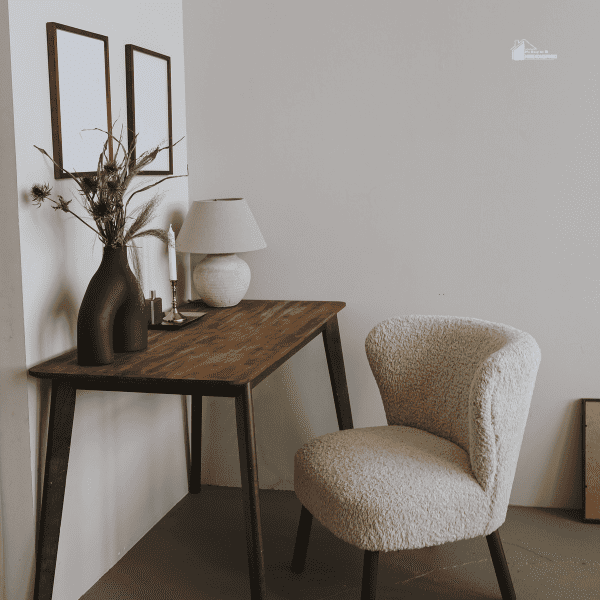
Choosing Minimalist Furniture Pieces
When it comes to creating a minimalist interior design, choosing the right furniture pieces is essential. Opt for furniture with clean lines, simple silhouettes, and a sleek design. Look for materials such as wood, metal, or glass, as they add a touch of elegance without overwhelming the space.
Keep the color palette simple and neutral, with tones like white, gray, or black. Also, consider the functionality of the furniture. Look for pieces that offer storage solutions, such as hidden drawers or shelves, to help keep the space organized and clutter-free. By carefully selecting minimalist furniture pieces, you can create a stylish and functional living space.
Maximizing Storage with Multi-functional Furniture
When it comes to designing a minimalist interior, maximizing storage is key. One way to achieve this is by incorporating multi-functional furniture pieces. These pieces not only serve their primary purpose but also provide additional storage options. For example, a sofa with built-in drawers or a coffee table with hidden compartments can help declutter the space while still maintaining a sleek aesthetic.
Other options include ottomans with storage space inside or beds with built-in drawers. By choosing multi-functional furniture, you can maximize storage in a stylish and efficient way, keeping your space clean and organized.
Neutral Color Palette
Choosing a neutral color palette is an essential element of minimalist interior design. Neutral colors such as white, beige, gray, taupe, and soft earth tones create a calm and balanced backdrop that allows other elements to stand out and maintain minimalism's clean and uncluttered aesthetic. These colors are timeless and easy to achieve without breaking the bank, making them perfect for those on a budget.
By incorporating a neutral color scheme in your minimalist design, you can create a cohesive and tranquil space that exudes simplicity and elegance. Embrace the beauty of neutrals and let them transform your home into a peaceful retreat.
Using Neutrals to Create a Calming Space
Incorporating neutral colors in your minimalist interior design is key to creating a calming and tranquil space. Neutrals such as white, beige, and gray have a soothing effect on the eyes and create a sense of balance and harmony. They provide a clean and uncluttered backdrop that allows other elements in the room to stand out.
By using neutrals on walls, floors, and large furniture pieces, you can create a serene and timeless atmosphere. To add depth and interest, you can incorporate different shades and textures of neutrals. These calming tones will create a peaceful ambiance that promotes relaxation and mindfulness in your home.
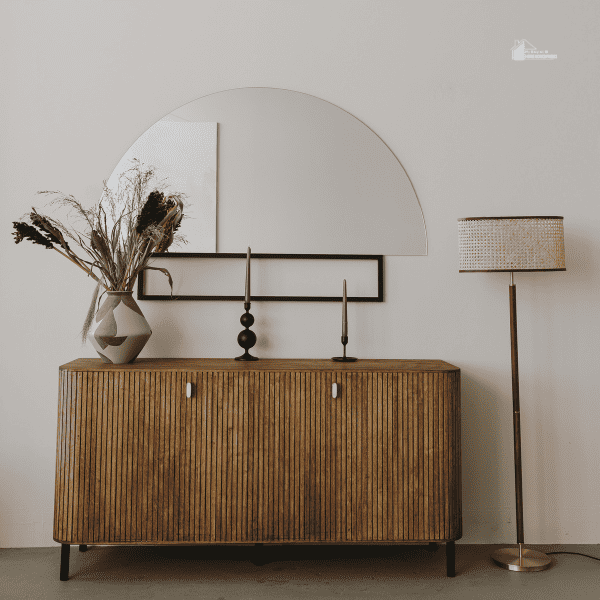
Incorporating Pop of Colors in Minimalist Design
In minimalist interior design, incorporating a pop of color can be a great way to add visual interest and personality to the space. While neutrals are the foundation of a minimalist design, adding a touch of color can create a focal point and bring life to the room.
Consider using vibrant accent pieces such as pillows, artwork, or a statement furniture piece in a bold hue. These pops of color can create a sense of contrast against the clean backdrop, making them stand out and creating a dynamic visual impact. However, it's important to use color sparingly to maintain the minimalist aesthetic and avoid overwhelming the space.
Decluttering and Organization
Decluttering and organization are essential components of minimalist interior design. By removing unnecessary items and keeping belongings organized, you can create a clean and calming space. Decluttering involves purging items that are no longer needed or loved, allowing you to create a clutter-free environment.
Utilizing storage solutions such as baskets, shelves, and bins can help keep items organized and out of sight. Implementing a minimalist approach to organization means assigning a designated place for each item and regularly decluttering to maintain a streamlined space. This practice not only promotes a sense of tranquility but also makes daily life more efficient and enjoyable.
Importance of Decluttering in Minimalist Design
In minimalist interior design, decluttering plays a vital role in creating a harmonious and serene space. By removing unnecessary items and clutter, you can achieve a visually clean and uncluttered environment.
Decluttering not only contributes to the aesthetics of minimalist design but also promotes a sense of calmness and order. It allows you to focus on essential elements and enhances the functionality of the space.
By minimizing distractions and creating a streamlined environment, decluttering helps you truly appreciate and enjoy the beauty of the few carefully chosen items in your space. So, embrace the importance of decluttering and see how it transforms your minimalist design into a peaceful oasis.
Storage Solutions and Organization Tips
When it comes to minimalist interior design, storage solutions and organization are crucial for maintaining a clutter-free space. Look for furniture pieces that double as storage, such as ottomans with hidden compartments or beds with built-in drawers. Utilize vertical space by installing shelves or wall-mounted storage units. Use storage bins or baskets to keep smaller items organized.
Labeling containers and shelves can also help you quickly locate what you need. Also, consider implementing a “one in, one out” rule, where you remove an item before bringing in a new one, to prevent unnecessary accumulation. By implementing these storage solutions and organization tips, you can create a streamlined and tidy environment in your minimalist space.
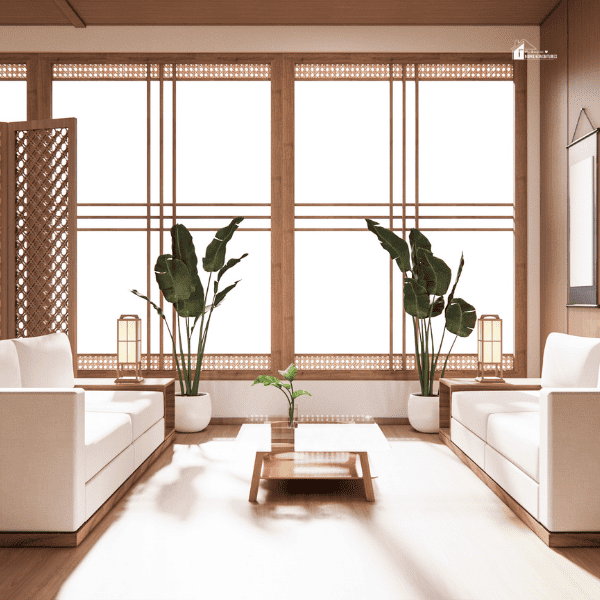
Natural Light and Open Spaces
Natural light is a key element in minimalist interior design. It creates an inviting and refreshing atmosphere, making the space feel bright and airy. Maximizing natural light can be achieved by using sheer curtains or blinds that allow light to filter through, as well as strategically placing mirrors to reflect light. Open spaces also play a vital role in minimalist design.
By keeping the layout open and uncluttered, the space feels more expansive and allows for a better flow and movement. This creates a sense of tranquility and freedom, enhancing the overall minimalist aesthetic. Embracing natural light and open spaces in your design will help create a calming and inviting environment in your home.
Utilizing Natural Light for Minimalist Design
Utilizing natural light is a crucial element in achieving a minimalist interior design. Natural light not only creates a sense of openness and brightness but also contributes to the overall aesthetic of simplicity and tranquility. To maximize natural light, it is important to keep window treatments minimal, opting for sheer curtains or light-colored blinds that allow sunlight to filter through.
Also, using mirrors strategically placed near windows can help to reflect and amplify the natural light, making the space feel even more airy and expansive. By embracing natural light, a minimalist design can truly come to life, creating a serene and inviting atmosphere.
Maximizing Space with Seamless Transitions
In a minimalist interior design, maximizing space is essential. One way to achieve this is through seamless transitions between different areas within the space. By eliminating unnecessary walls or barriers, a sense of continuity is created, making the area feel larger and more open. This can be achieved by using floor-to-ceiling windows or open floor plans that seamlessly connect different living areas.
Also, using consistent flooring materials throughout the space can create a seamless flow, visually expanding the area. By prioritizing seamless transitions, a minimalist design can optimize space utilization, creating a harmonious and spacious environment.
DIY and Budget-Friendly Minimalist Design
One of the great aspects of minimalist interior design is that it prioritizes simplicity and functionality, making it perfect for budget-conscious individuals. One way to achieve a budget-friendly minimalist design is by incorporating DIY projects into your space. Repurposing existing items or creating your own furniture and decor can not only be cost-effective but also adds a unique touch to your space.
Also, consider exploring thrift stores and second-hand markets to find affordable alternatives to brand-new furniture and decor pieces. Embracing a DIY mindset allows you to create a personalized and budget-friendly minimalist design that reflects your style and saves you money.

Repurposing Items for Minimalist Design
One of the key principles of minimalist interior design is to prioritize functionality and simplicity. Repurposing items is a great way to achieve this while staying on a budget. Look around your home for items that can serve a different purpose in your minimalist design.
For example, you can turn an old ladder into a stylish bookshelf or use mason jars as storage containers. Get creative and give new life to items that might otherwise be discarded. Not only does repurposing items save money, but it also adds a unique and personalized touch to your minimalist space.
Affordable Alternatives and Thrift Store Finds
When it comes to achieving a budget-friendly minimalist design, there are plenty of affordable alternatives and hidden gems waiting to be discovered at thrift stores. These stores often offer unique and stylish furniture pieces, decor items, and accessories at a fraction of the cost compared to new purchases. From vintage chairs to antique tables, you can find high-quality items with character and charm.
Don't underestimate the power of secondhand shopping – it not only saves money but also promotes sustainability by giving new life to pre-loved items. So take some time to explore your local thrift stores and uncover the budget-friendly treasures that await you.
Conclusion
Minimalist interior design offers a budget-friendly and appealing approach to decorating living spaces. By focusing on simplicity, functionality, and organization, minimalist design creates a sense of calmness and tranquility in the home. With the use of simple and functional furniture, a neutral color palette, decluttering and organization techniques, and the incorporation of natural light and open spaces, a minimalist design can be achieved without breaking the bank.
By embracing repurposing and thrift store finds, finding affordable alternatives becomes easier, allowing for a budget-friendly yet stylish minimalist aesthetic. Overall, minimalist interior design proves that less is more when it comes to creating a beautiful and serene living environment.
Embracing the Budget-Friendly Appeal of Minimalist Interior Design
Embracing a minimalist interior design not only offers a visually appealing aesthetic but also provides a budget-friendly approach to decorating. By focusing on simplicity and functionality, you can create a stylish and serene living environment without breaking the bank. Repurposing items and finding affordable alternatives, such as thrift store finds, can help you achieve a minimalist look without the hefty price tag.
Minimalist design encourages you to declutter and organize your space, which can save you money by preventing unnecessary purchases. By embracing the budget-friendly appeal of minimalist interior design, you can create a beautiful and peaceful home without overspending.
